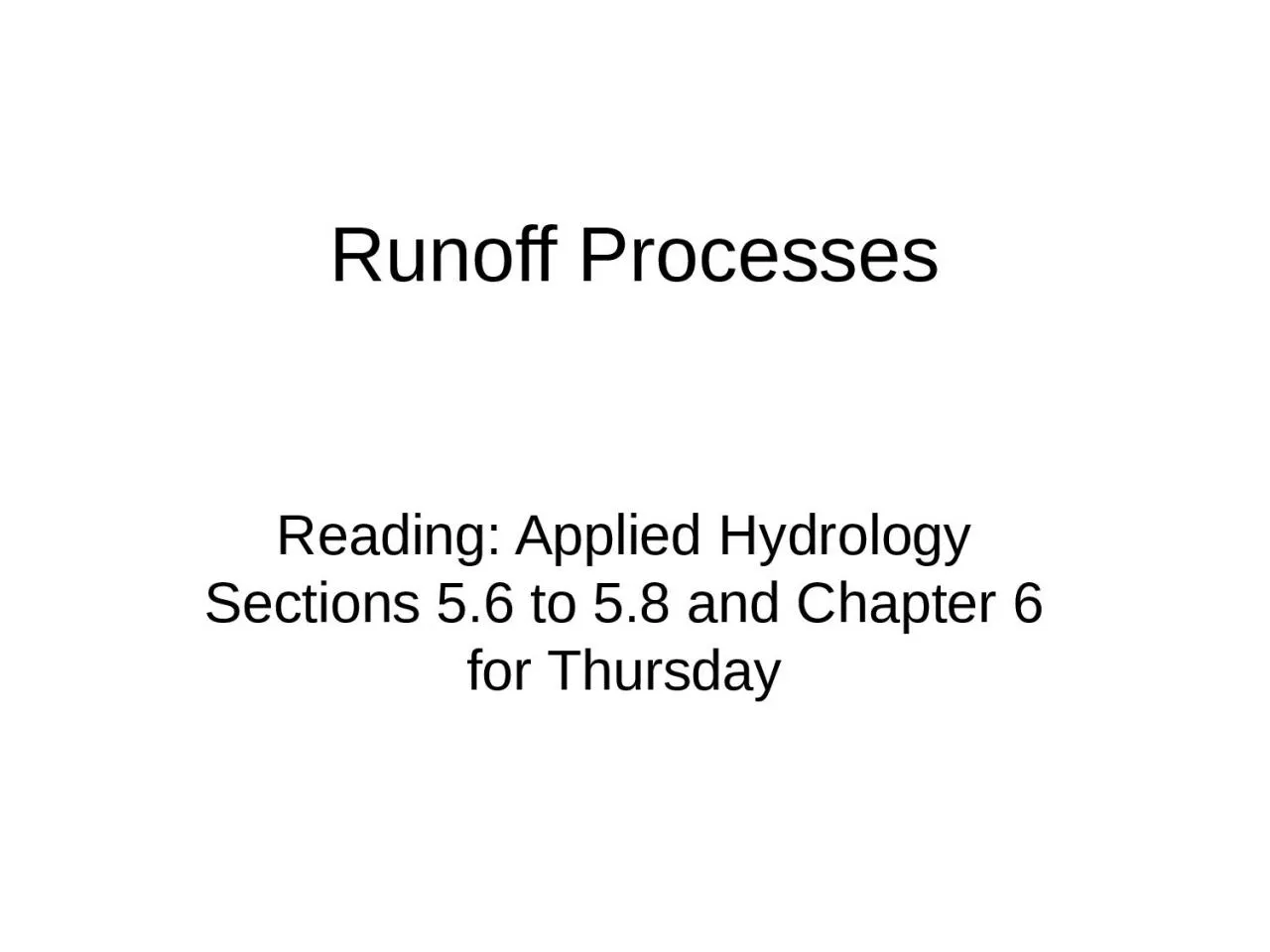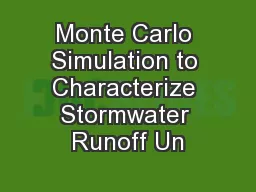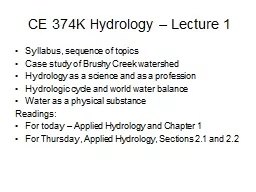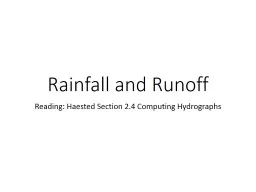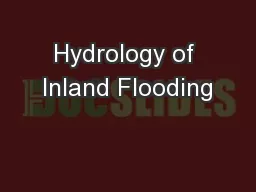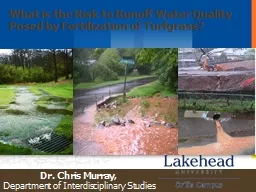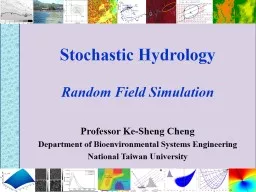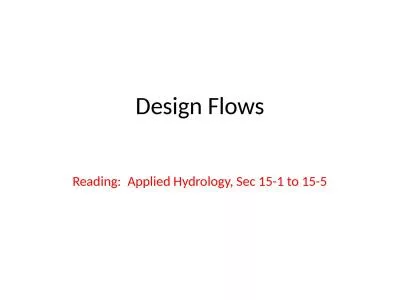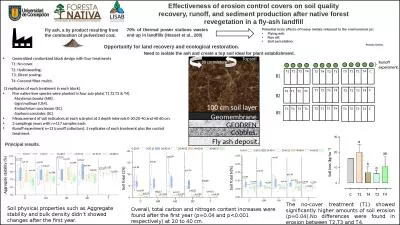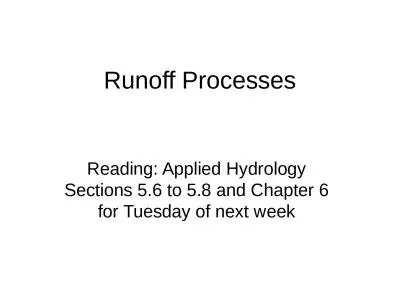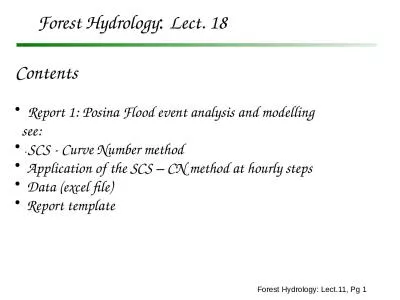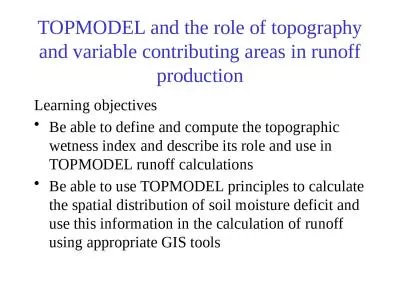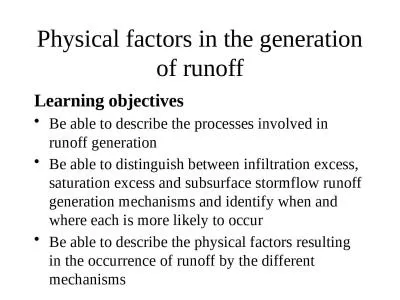PPT-Runoff Processes Reading: Applied Hydrology Sections 5.6 to 5.8 and Chapter 6 for Thursday
Author : adia | Published Date : 2023-10-27
Surface water Watershed area of land draining into a stream at a given location Streamflow gravity movement of water in channels Surface and subsurface flow Affected
Presentation Embed Code
Download Presentation
Download Presentation The PPT/PDF document "Runoff Processes Reading: Applied Hydrol..." is the property of its rightful owner. Permission is granted to download and print the materials on this website for personal, non-commercial use only, and to display it on your personal computer provided you do not modify the materials and that you retain all copyright notices contained in the materials. By downloading content from our website, you accept the terms of this agreement.
Runoff Processes Reading: Applied Hydrology Sections 5.6 to 5.8 and Chapter 6 for Thursday: Transcript
Download Rules Of Document
"Runoff Processes Reading: Applied Hydrology Sections 5.6 to 5.8 and Chapter 6 for Thursday"The content belongs to its owner. You may download and print it for personal use, without modification, and keep all copyright notices. By downloading, you agree to these terms.
Related Documents

